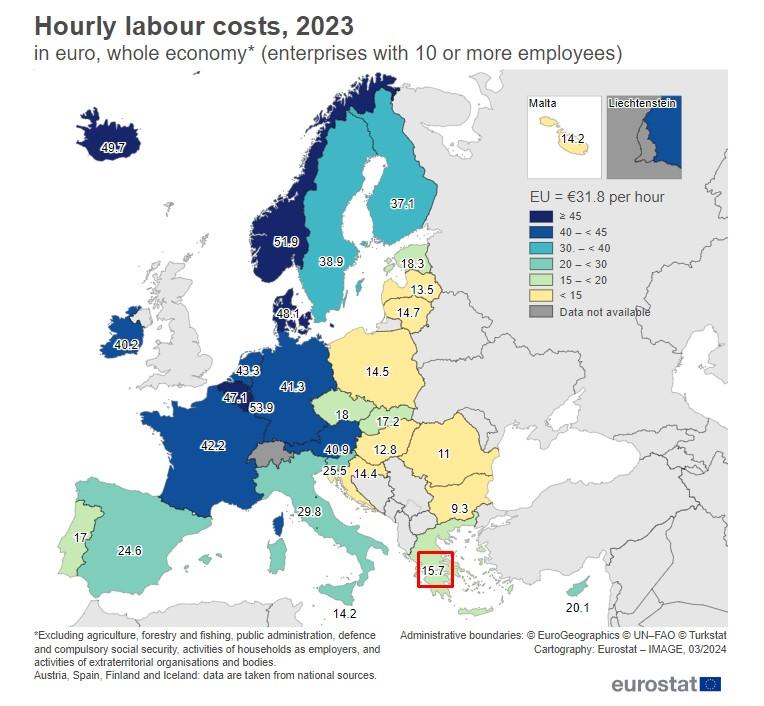Eurostat analysis ranks Greece among European countries with lowest labour costs

At the higher end of the spectrum, countries like Luxembourg (€53.9), Norway (€51.9), and Belgium (€47.1) have hourly labour costs exceeding €45. Conversely, Bulgaria (€9.3), Romania (€11), Hungary (€12.8), Croatia (€14.4), and Poland (€14.5) make up the segment with labour costs under €15.
Eurostat points out that labour costs consist of wages and non-wage costs, with the latter comprising 24.7% of total labour costs in the EU and 25.5% in the Eurozone. Malta (1.4%), Romania (5.0%), and Lithuania (5.4%) have the lowest non-wage cost shares, while Sweden (32.2%) and France (31.9%) have the highest.
For 2023, the average hourly labour cost was reported at €31.8 for the EU and €35.6 for the Eurozone, marking an increase from €30.2 and €34.0, respectively, in 2022.

______________________________________________
Are you seeking news from Greece presented from a progressive, non-mainstream perspective? Subscribe monthly or annually to support TPP International in delivering independent reporting in English. Don’t let Greek progressive voices fade.
Make sure to reference “TPP International” and your order number as the reason for payment.